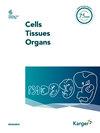通过hAMSCs分泌组下调MDA-MB-231乳腺癌细胞中Pinkbar/pAKT和MMP2/MMP9的表达作为癌症治疗的潜在靶点
IF 2.9
4区 生物学
Q1 ANATOMY & MORPHOLOGY
引用次数: 3
摘要
乳腺癌是全世界妇女癌症相关死亡的主要原因之一。基于干细胞的癌症治疗被认为是一个新的和有前途的平台。在本研究中,我们探讨了人羊膜间充质间质细胞(hAMSCs)通过Pinkbar(平面肠道和肾脏特异性BAR结构域蛋白)、pAKT和基质金属蛋白酶包括MMP2和MMP9对MDA-MB-231乳腺癌细胞的治疗作用。为此,我们采用了孔径为0.4 μm的Transwell 6孔板共培养体系。72h后,采用实时荧光定量PCR和western blot方法分析经hamscs处理的MDA-MB-231乳腺癌细胞表皮生长因子受体(EGFR)、c-Src (EGFR信号通路的关键介质)、Pinkbar、pAKT、MMP2和MMP9的表达。基于2D和3D细胞培养模型,发现MDA-MB-231乳腺癌细胞通过下调EGFR、c-Src、Pinkbar、pAKT、MMP2和MMP9显著降低肿瘤细胞的生长和运动。此外,诱导细胞凋亡也有报道。我们的发现表明hAMSCS分泌组对癌细胞具有治疗作用。为了确定分子机制的细节,还需要进行更多的实验。本文章由计算机程序翻译,如有差异,请以英文原文为准。
Downregulation of Pinkbar/pAKT and MMP2/MMP9 Expression in MDA-MB-231 Breast Cancer Cells as Potential Targets in Cancer Therapy by hAMSCs Secretome.
Breast cancer is one of the leading causes of cancer-related deaths among women worldwide. Cancer therapy based on stem cells is considered as a novel and promising platform. In the present study, we explored the therapeutic effects of human amniotic mesenchymal stromal cells (hAMSCs) through Pinkbar (planar intestinal- and kidney-specific BAR domain protein), pAKT, and matrix metalloproteinases including MMP2 and MMP9 on MDA-MB-231 breast cancer cells. For this purpose, we employed a co-culture system using Transwell 6-well plates with a pore size of 0.4 μm. After 72 h, the hAMSCs-treated MDA-MB-231 breast cancer cells, the expression of epidermal growth factor receptor (EGFR), and c-Src (a key mediator in EGFR signaling pathway), Pinkbar, pAKT, MMP2, and MMP9 were analyzed using quantitative real time PCR and western blot methods. Based on 2D and 3D cell culture models, significant reduction of tumor cell growth and motility through downregulation of EGFR, c-Src, Pinkbar, pAKT, MMP2, and MMP9 were found in MDA-MB-231 breast cancer cells. Moreover, induction of cellular apoptosis was also reported. Our finding indicates that the hAMSCS secretome has therapeutic effects on cancer cells. To identify the details of the molecular mechanisms, more experiments will be required.
求助全文
通过发布文献求助,成功后即可免费获取论文全文。
去求助
来源期刊

Cells Tissues Organs
生物-发育生物学
CiteScore
4.90
自引率
3.70%
发文量
45
审稿时长
6-12 weeks
期刊介绍:
''Cells Tissues Organs'' aims at bridging the gap between cell biology and developmental biology and the emerging fields of regenerative medicine (stem cell biology, tissue engineering, artificial organs, in vitro systems and transplantation biology). CTO offers a rapid and fair peer-review and exquisite reproduction quality. Special topic issues, entire issues of the journal devoted to a single research topic within the range of interests of the journal, are published at irregular intervals.
 求助内容:
求助内容: 应助结果提醒方式:
应助结果提醒方式:


